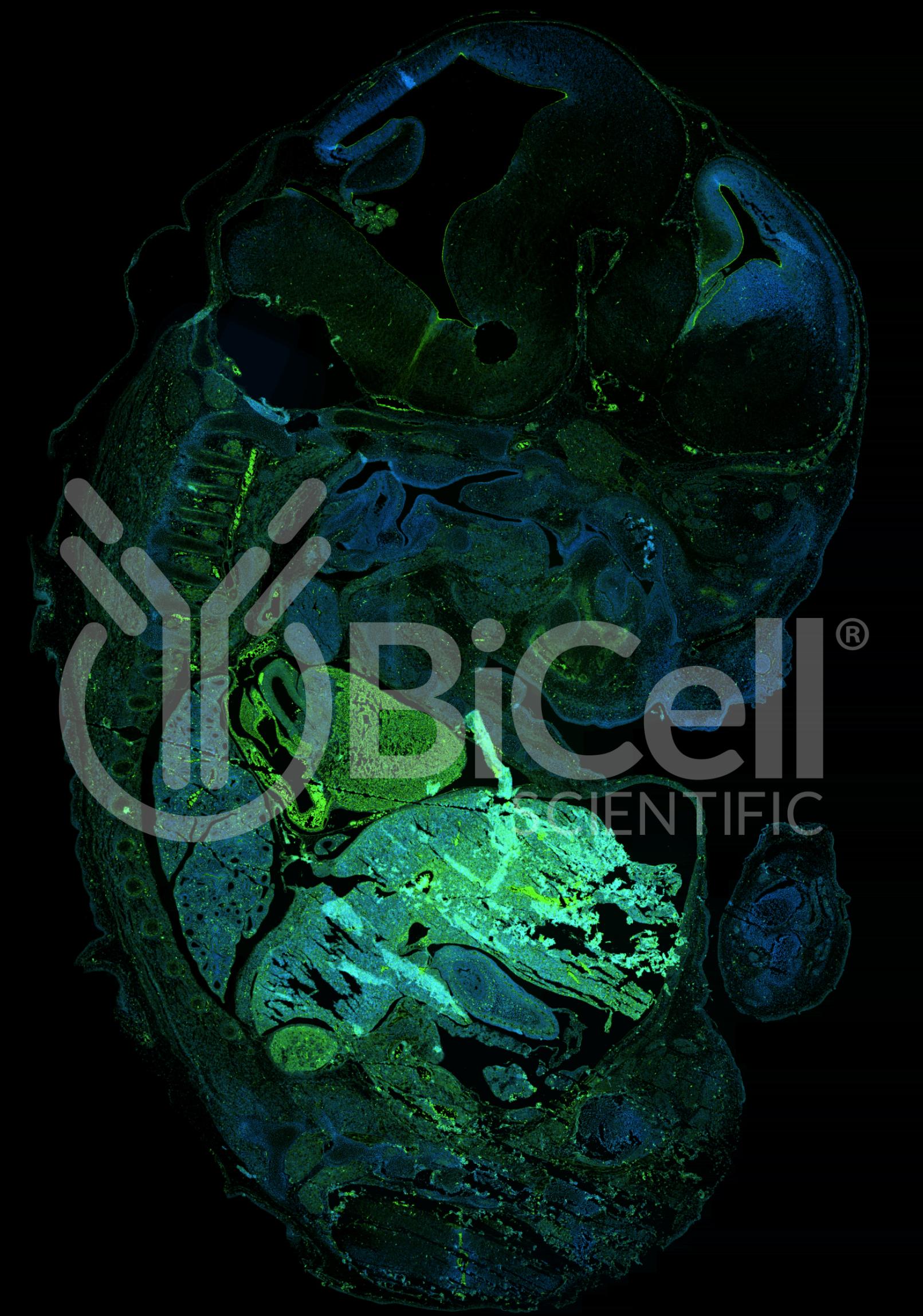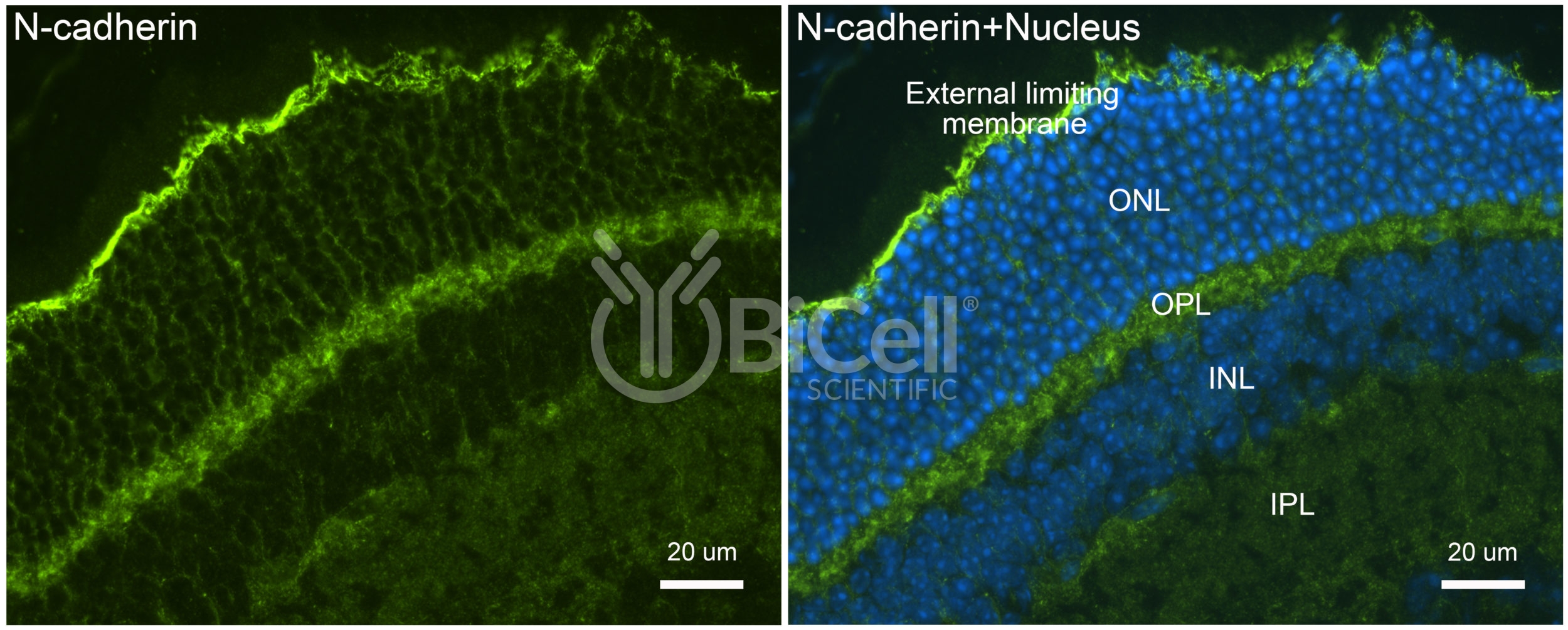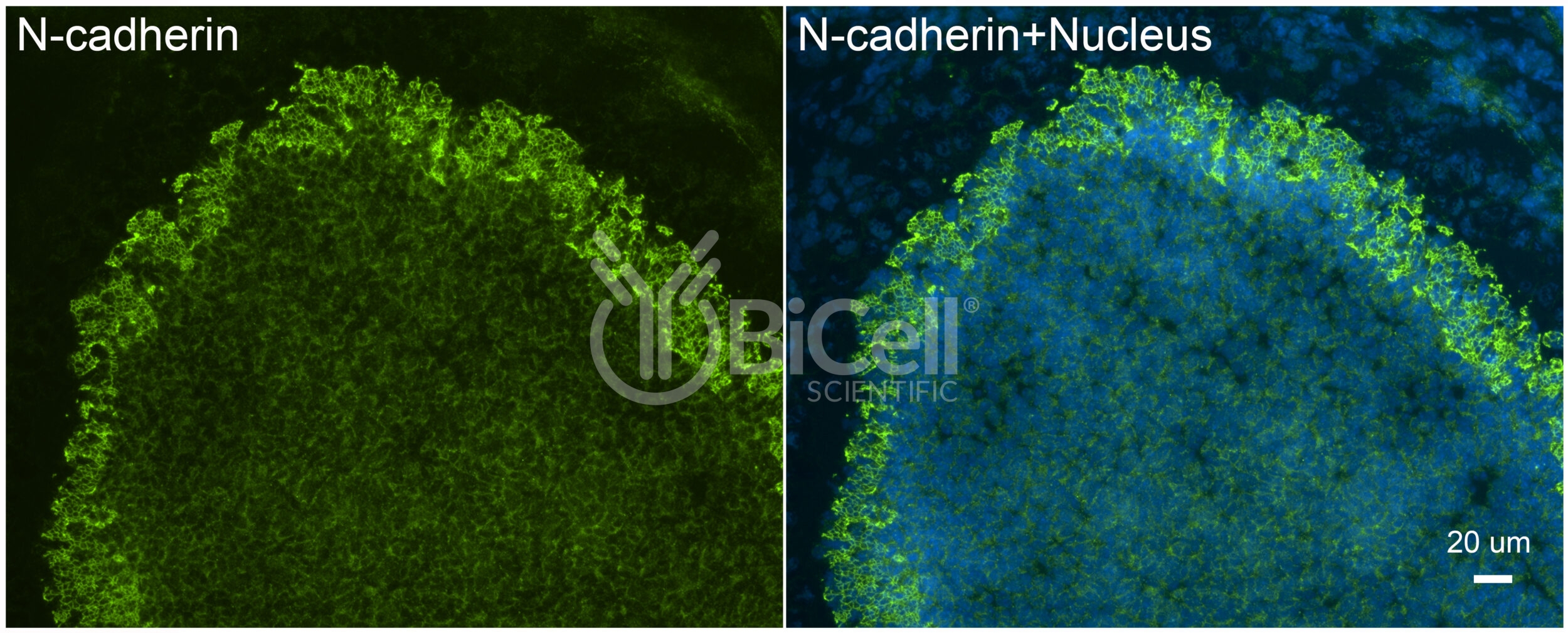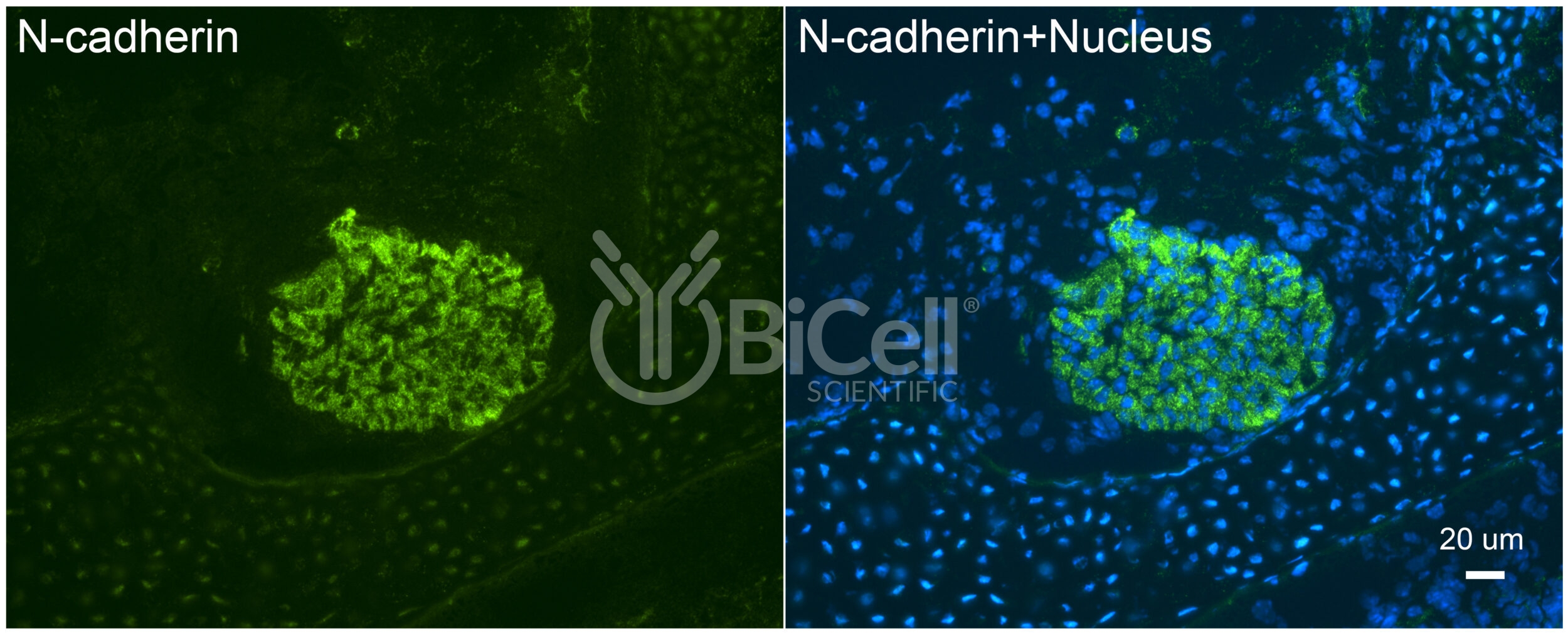N-Cadherin (Cdh2 or CD325) Antibody
Description
Anti-N-cadherin (Cdh2 or CD325) antibody is validated on mouse tissue and recommended for immunofluorescence labeling, IHC, or western blot of materials from rodent and human tissues. N-cadherin is a protein that is encoded by the Cdh2 gene in human. N-cadherin is also known as Cadherin-2 or neural cadherin (NCAD) or CD325. N-cadherin belongs to the classic cadherin protein superfamily. The cadherin protein features an amino-terminal extracellular domain or ectodomain or EC domain that is followed by a transmembrane domain and a carboxyl-terminal intracellular domain. The cadherin ectodomain plays an adhesive role whereas the intracellular domain mediates cadherin-catenin interactions. E-cadherin is widely expressed in tissues of mesoderm origin. Note that N-cadherin has high sequence similarity to E-cadherin (Cadherin-1). This antibody is developed using an N-cadherin specific sequence.
| Application: | Immunofluorescence, Immunohistochemistry, Western Blot |
|---|---|
| Clonality: | Polyclonal |
| Concentration: | 0.25 mg/ml |
| Conjugation: | Unconjugated |
| Host: | Rabbit |
| Immunogen: | Synthetic peptide (14-aa) derived from the C-terminal region of human N-cadherin protein |
| Isotype: | IgG |
| Purification: | Affinity Chromatography |
| Reactivity: | Human, Mouse, Rat |
| Species Homology: | Synthetic peptide sequence is identical to mouse or rat sequence (this sequence has no homology to other cadherin isoforms) |
| Storage: | -20°C |
| Storage Buffer: | PBS, pH 7.2, 0.1% Sodium Azide |




